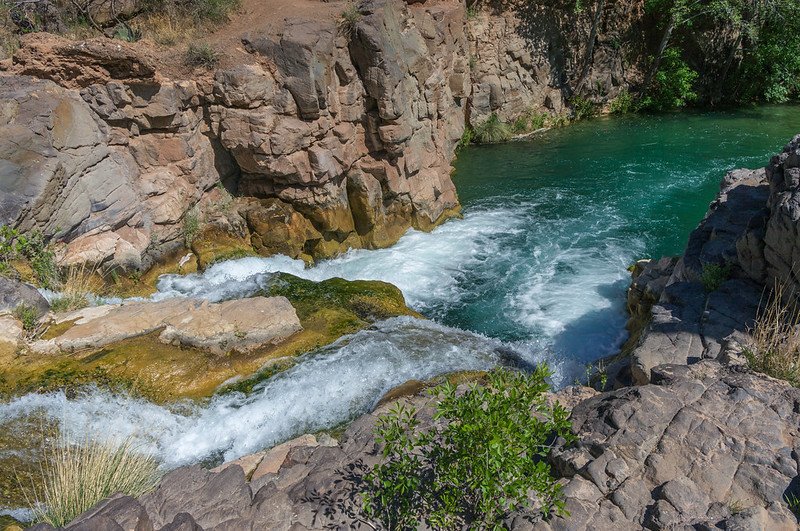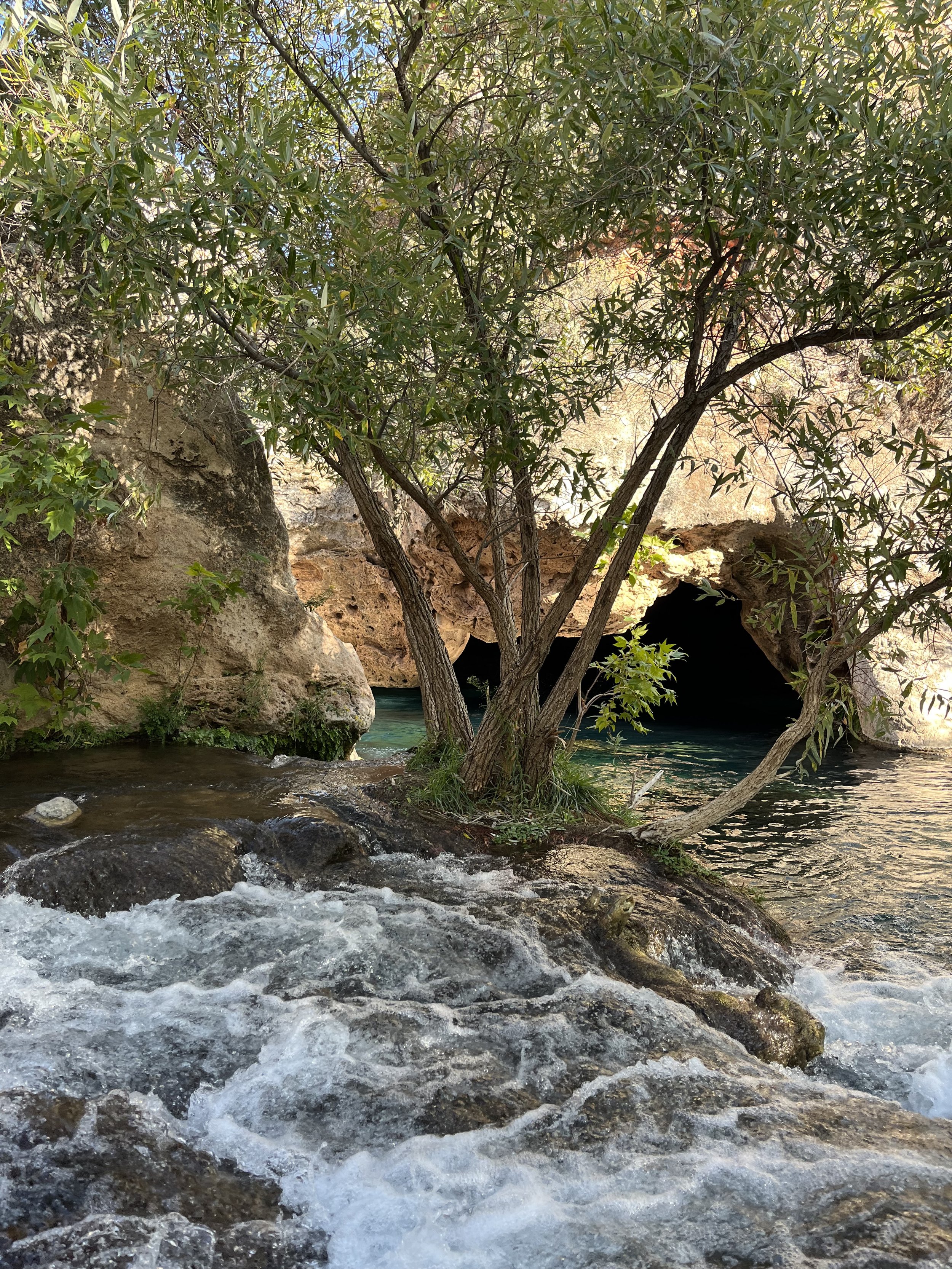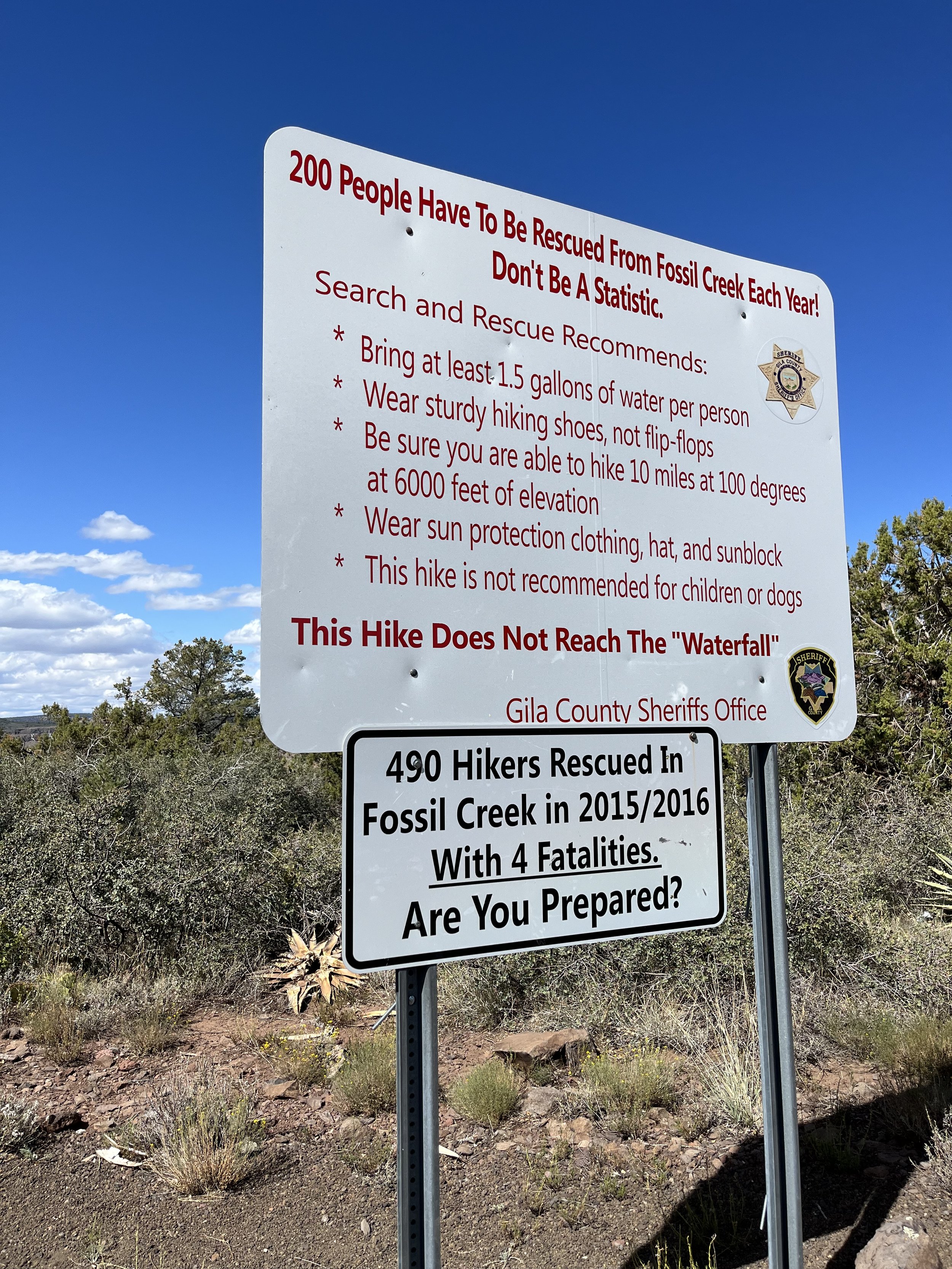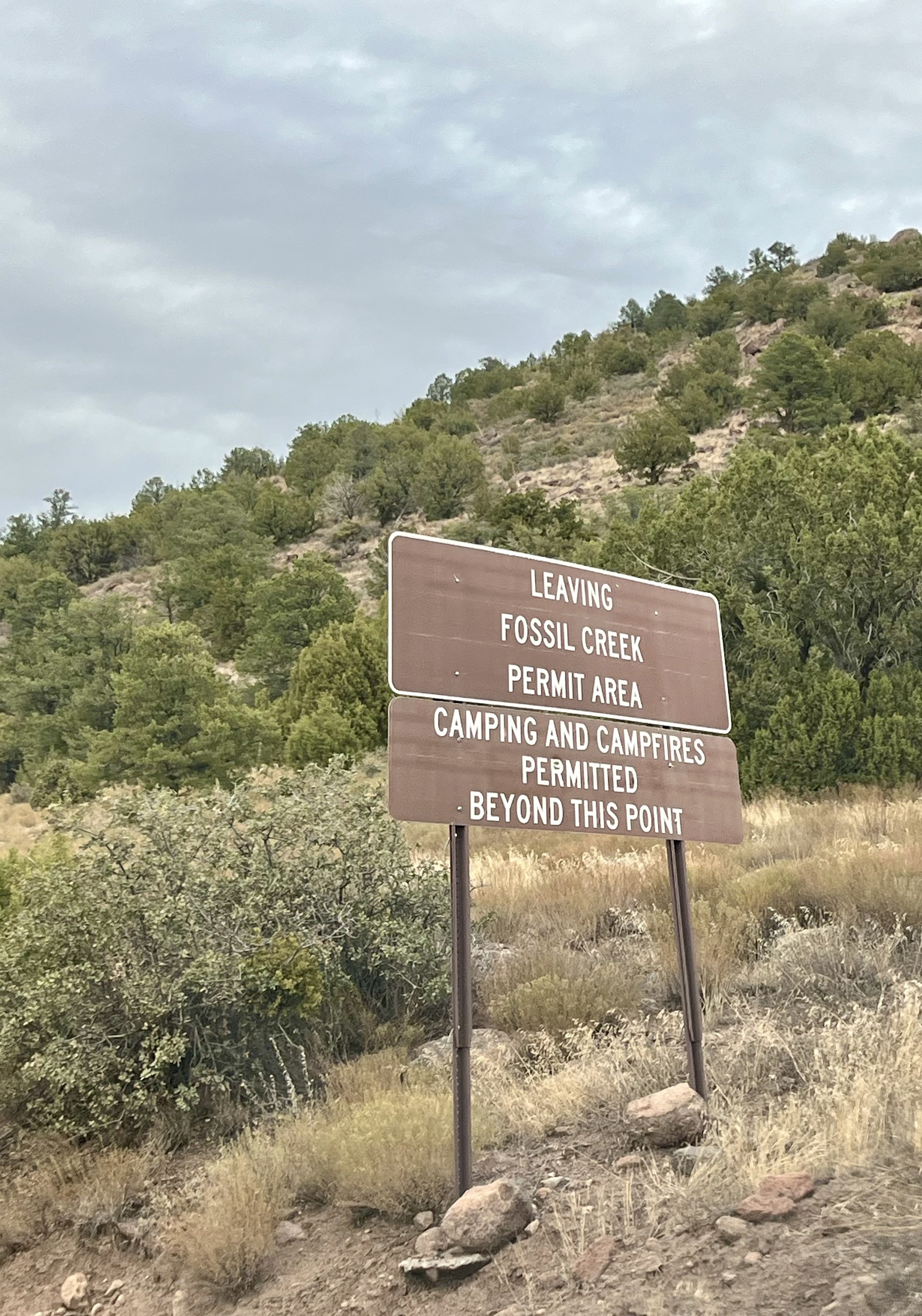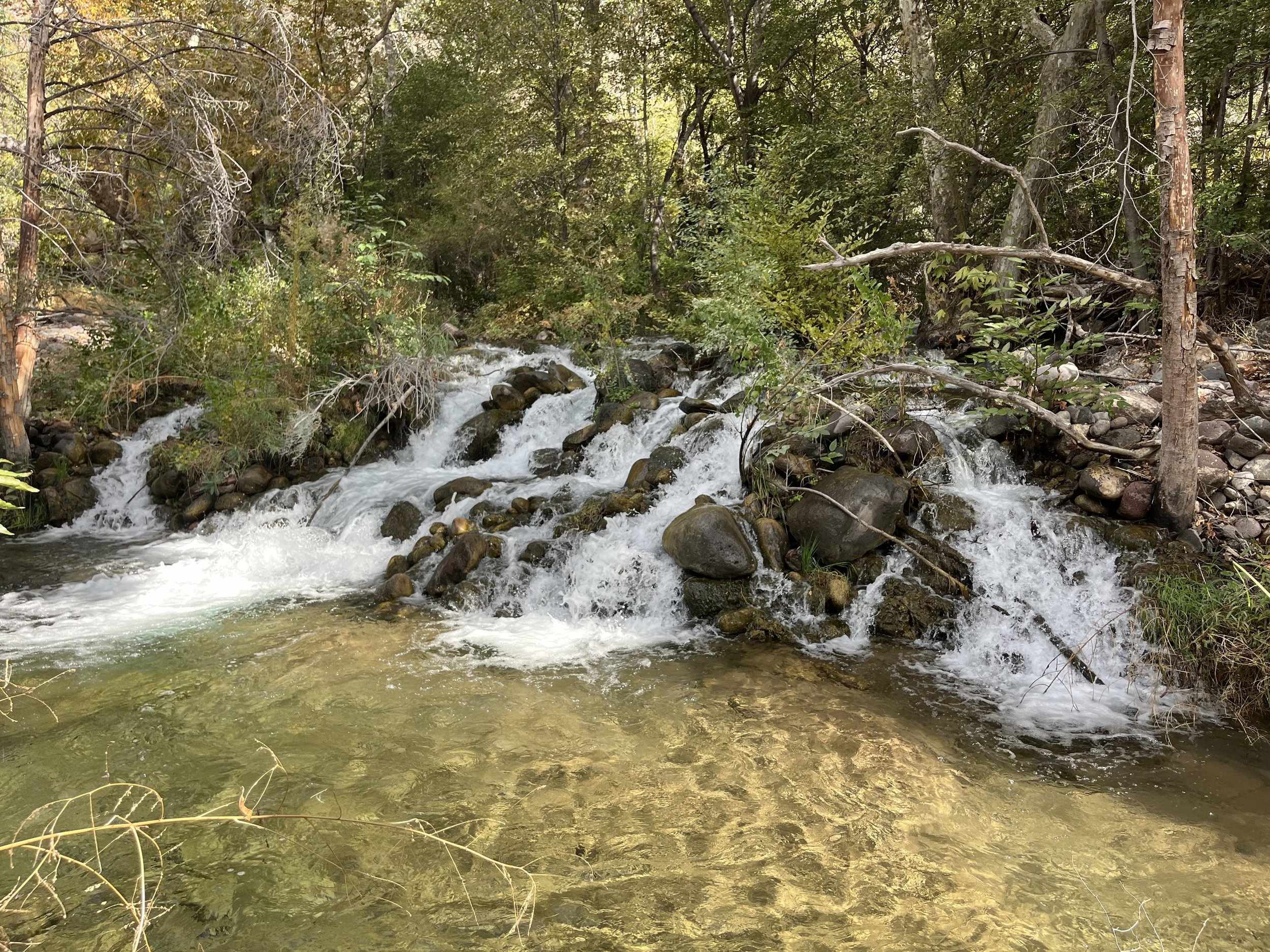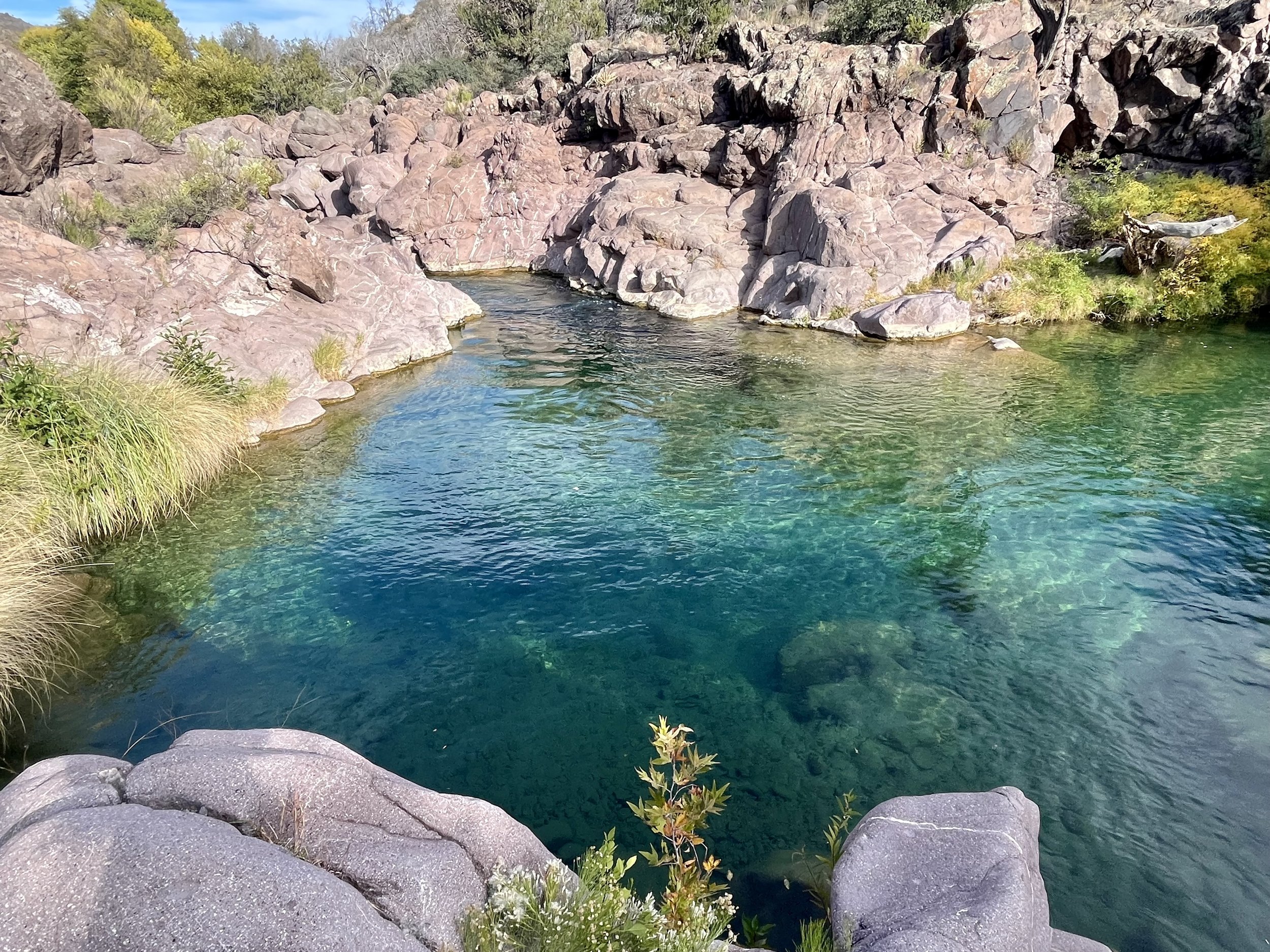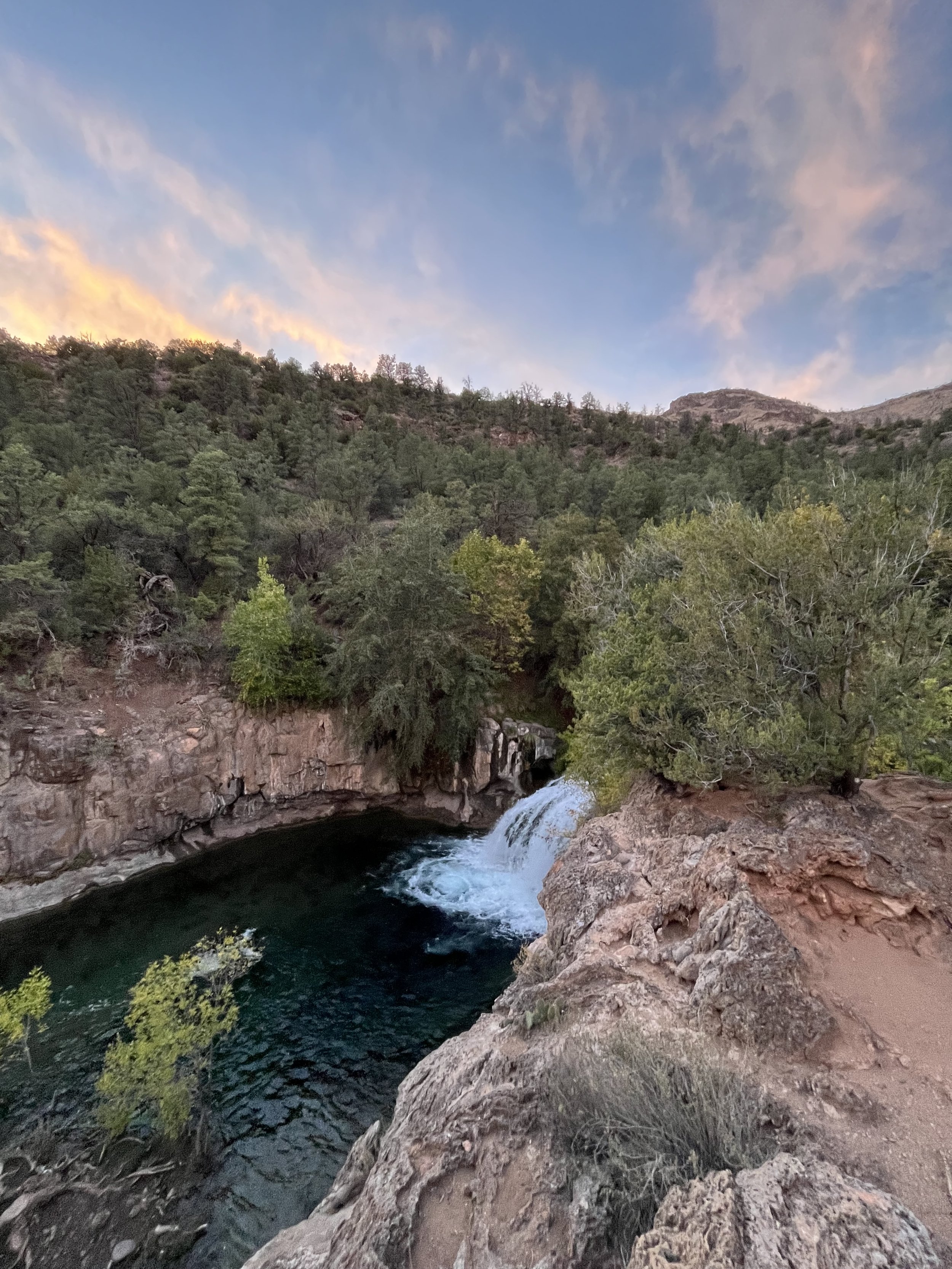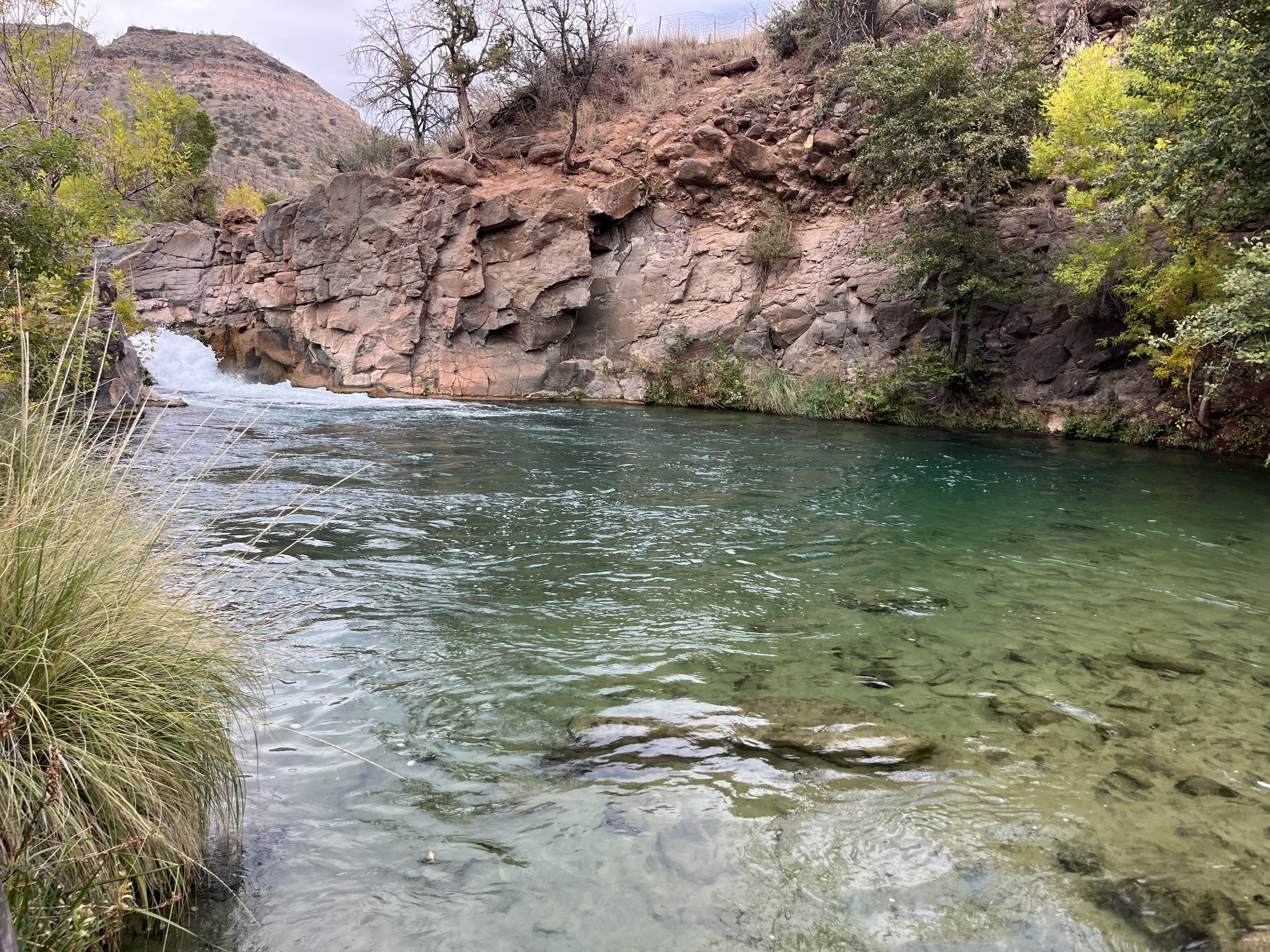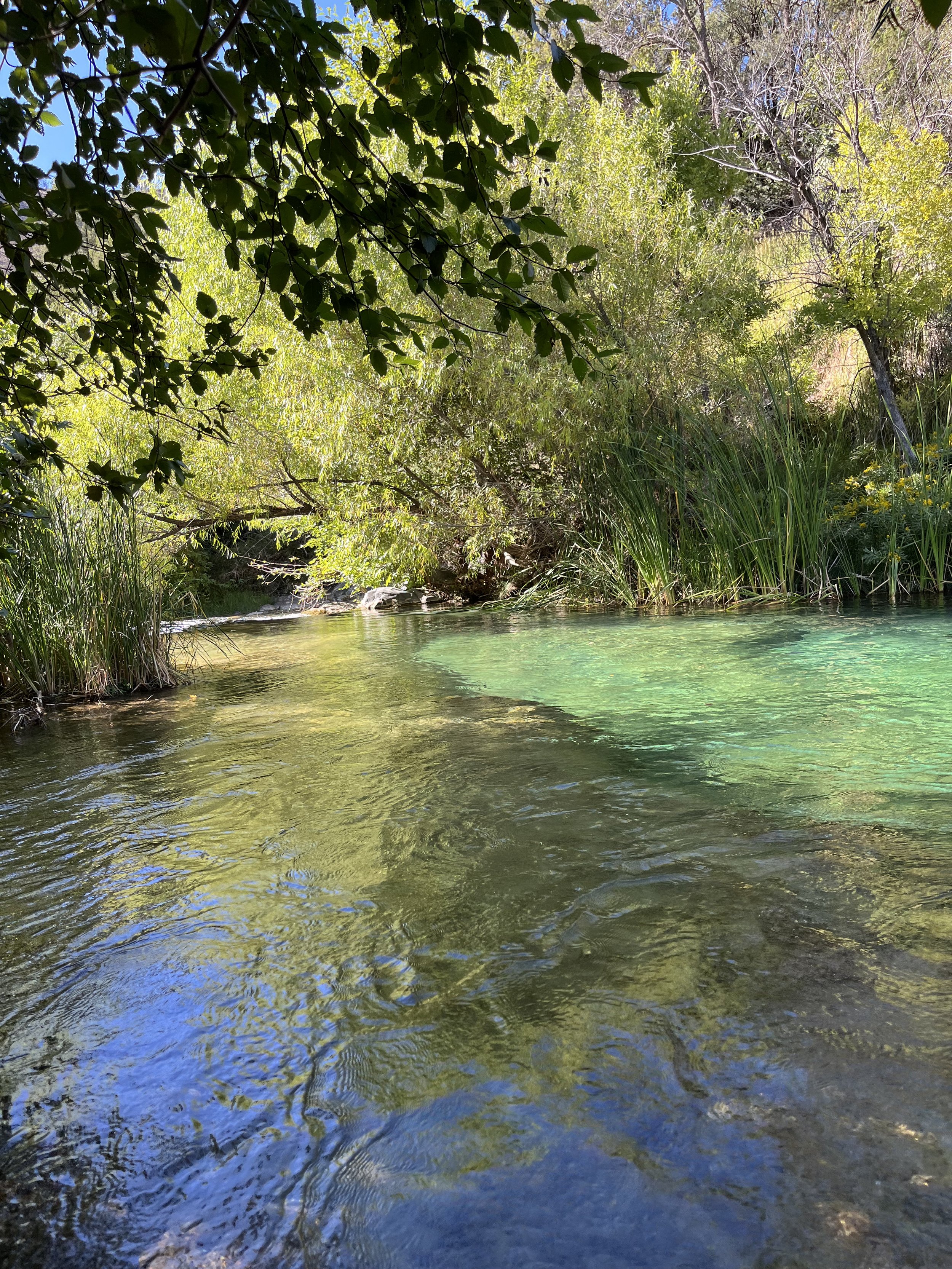Guide to Visiting Fossil Creek in Arizona
Nestled in the heart of Arizona, Fossil Creek is one of the state’s most remote rivers and best-kept secrets. Known for its crystal-clear waters, dramatic waterfalls, and lush surroundings, Fossil Creek is a perfect destination for hikers, swimmers, photographers, and anyone looking to experience the pristine side of the Grand Canyon State.
I've spent over a week exploring this area, and there's still so much to enjoy. I put together this blog and this guide because I found a lack of online information and it was very confusing. Fossil Creek is remote, with no service, so it’s important to know what you’re getting into before you go on this adventure.
By reading this blog, I am confident that you are a responsible recreator. This means following leave-no-trace principles. This delicate area requires us to be stewards to keep it open for all to enjoy. You are responsible for yourself in the wild. Recreate responsibly.
Fossil Creek Waterfall- you can jump in from the rocks above and there’s a grotto you can swim under the waterfall
What Makes Fossil Creek Special?
Fossil Creek is a unique and stunning natural river. The creek, which flows from the Mogollon Rim, is fed by a natural spring that ensures the water remains crystal clear year-round. The vibrant turquoise hues are a result of the high mineral content in the water, making it a photographer's dream.
Fossil Creek is not just visually stunning—it’s ecologically important, too. The area is home to a diverse range of plants and wildlife, including rare species like the Gila monster, California condors, and several species of fish that rely on the creek’s constant water flow. The creek also has historical significance, with fossils dating back millions of years found in the surrounding area, which is how the creek earned its name.
The area has been used for centuries by Native American tribes, and its rich history adds to the experience of exploring this magical destination.
When to Visit Fossil Creek: Best Times of Year
The best time to visit Fossil Creek largely depends on what kind of experience you’re looking for.
Spring (March to May): If you want to see the creek in full bloom, spring is the best time to visit. Wildflowers carpet the landscape, and temperatures are mild, making it perfect for hiking and picnicking. This is also the time when the creek’s water flow is at its peak, providing a stunning backdrop for photos.
Summer (June to August): Arizona summers can get hot, but the clear waters of Fossil Creek provide a refreshing retreat. Just be prepared for crowds—this is the busiest season. If you do visit in the summer, make sure you’re prepared for the heat. Be very cautious of Monsoons- they can be deadly.
Fall (September to November): The cooler temperatures of fall make this an ideal time for hiking. The changing foliage adds a golden touch to the creek’s vibrant landscape, and the crowds are thinner than in summer, offering a more peaceful experience. It seems that early-mid November is best for fall foliage.
Winter (December to February): If you want to avoid crowds and don’t mind cooler temperatures, winter offers a quiet and serene visit. However, be prepared for the possibility of snow and cold weather. I would not want to be down Fossil Creek Road after a rainstorm or snowstorm.
Directions and Parking Information
The Sally May swimming holes is one of my favorites.
Fossil Creek is located about 2 hours north of Phoenix or 1 hour south of Sedona.
- Overnight Parking: Overnight parking/ camping within Fossil Creek is prohibited from April 1- October 1.
Fees & Permits: Fossil Creek is part of a protected area, and as such, visitors must secure a permit to access the area. Permits can be purchased online through Recreation.gov. Click here for Fossil Creek permits or here for Bob Bear Trailhead permits.
I discuss the different parking areas more in-depth in my Complete Guide to Fossil Creek.
What to Bring: Essential Gear for Your Fossil Creek Adventure
To get the most out of your Fossil Creek adventure, be sure to pack the following essentials:
Clothing: Layered clothing is a good idea, especially if you’re visiting in the cooler months. If you’re hiking, wear moisture-wicking clothes that dry quickly. For summer, lightweight, breathable fabrics will help you stay cool.
Footwear: Sturdy hiking shoes are a must, as the trails can be rocky and uneven. If you plan to wade or swim, pack water shoes or sandals for easy Creekside exploration.
Water Gear: If you plan on swimming in the creek’s crystal-clear waters, don’t forget your swimsuit, a towel, and a waterproof bag for wet clothes.
Daypack: A small backpack for carrying snacks, water, sunscreen, a first-aid kit, and a camera. If you're planning on a longer hike, pack extra food and hydration.
Water: Always bring enough water to stay hydrated. Don’t rely on the creek’s water for drinking—it’s not safe without purification, and in my opinion, it smells like calcium and I wouldn’t want to drink it.
Hiking Trails and Waterfall Views
Fossil Creek is (in my opinion) more of a swimming destination rather than a hiking destination. That said, there are a few trails and areas to explore.
Fossil Creek Waterfall Trail (Dixon Lewis): This is the most popular trail, offering an easy-to-moderate hike that takes you to Fossil Creek’s most famous waterfall. The trail is about 2 miles round-trip and includes some switchbacks, but nothing too strenuous. Along the way, you’ll pass through dense forests and get glimpses of the creek’s stunning blue waters.
Bob Bear Trail: A more challenging trail, this 8-mile round-trip hike takes you deep into the canyon and rewards you with access to Fossil Creek’s natural springs and quieter, secluded spots. It's great for experienced hikers and those who want to explore the area more thoroughly.
Swimming: The water in Fossil Creek is perfect for swimming. The pool beneath the waterfall is a popular spot for a refreshing dip. However, you don’t have to go to the waterfall to find epic swimming. Every parking lot in the Fossil Creek Wilderness area has access to water and there are deep, beautiful swimming holes all along the creek.
Camping at Fossil Creek
April 1- Oct 1 camping is prohibited within the Fossil Creek area. There are NO established campgrounds on Fossil Creek Road. There are dispersed sites outside of the wilderness area.
For more information on camping visit the guide I created.
Nearby Attractions and Towns
- Sedona: Known for its stunning red rock formations and spiritual atmosphere, Sedona is just a short drive away and offers additional hiking, art galleries, and great food.
- Verde Valley: If you’re a wine enthusiast, this area is home to some fantastic vineyards.
If you are driving the dirt road to Fossil Creek I recommend stopping in Camp Verde or Payson for gas and supplies. You do not want to get caught down there without gas or water.
Leave No Trace: How to Protect Fossil Creek for Future Generations
As you enjoy the beauty of Fossil Creek, remember to follow the Leave No Trace principles. Pack out all trash, stay on designated trails, and respect wildlife. Fossil Creek’s delicate ecosystem is a treasure that needs protection, so let’s do our part to preserve it for future generations.
Explore the most refreshing, secluded, and scenic swimming spots in Arizona. Whether you're an avid adventurer or just looking for the perfect place to cool off, this guide has everything you need to uncover one of Arizona’s best-kept secrets.
Fossil Creek is a must-visit destination for nature lovers and outdoor enthusiasts. With its breathtaking landscapes, rich history, and an array of outdoor activities, it’s the perfect place to disconnect and enjoy Arizona’s natural beauty. Whether you’re hiking to the waterfalls, swimming in the crystal-clear waters, or camping under the stars, Fossil Creek promises an unforgettable experience.
Explore more Wonder. Find more Awe.
With Gratitude,
Catherine
